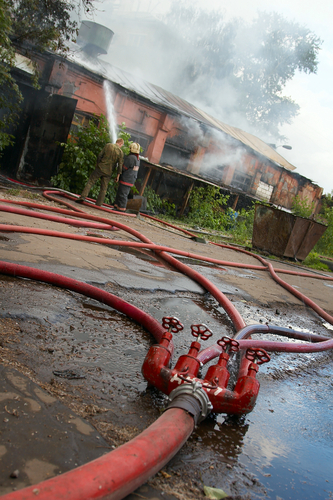In the last few years, plenty of publications, including Risk Management (whose blog this is), have spent no small amount of energy discussing pandemic risk. The spectre of H5N1, the lethal strain of avian flu you’ve heard so much about, has predominated, but other ailments, such as SARS, which shut down the city of Toronto a few years ago but caused few actual deaths, also figure prominently on the mass-disease radar.
The truth is, today’s globalized economy, with rapid and ubiquitous international travel, as well as intense urban development and massive interaction between human and animals all makes the planet one giant incubator for the kind of pandemic that can a) spread quickly and easily between human and animal hosts, b) prove fatal or at least seriosly debilitating, and c) can affect a huge number of people over an international or intercontinental level.
Now, this story got old after SARS didn’t pan out and bird flu never ended the world. Ominously, the same thing happened with terrorism and hurricane risk. Security experts pointed out just how effective it would be to fly airliners into skyscrapers well in advance of 9/11, and yet it was not enough to prevent it from happening. Likewise, when Hurricane Charlie nearly leveled New Orleans, the United States was given its final wake-up call to the increasing severity to coastal risk (especially to that particular city). The next year, Katrina. And we all know how that sad story ended.
So we find ourselves talking about pandemic risk again while Mexico City has shut down due to a large and sudden A (H1N1) outbreak that has already killed at least 20 (whoops! make that 68 – CNN just confirmed it), sickened 1,000 more, and might very well have the needed ingredients to become the big pandemic the World Health Organization has been trying to warn us for a long while. Already, this flu outbreak appears to have elements of human, swine and avian flu, and if people are just learning about it when they are getting sick from it, then it might already have gotten out of the barn, so to speak.
When we covered avian flu back in 2006, we did it from a disaster management angle, focusing on things like having proper workers compensation coverage, having contingency plans for dealing with an empty office, and having remote working policies in place so folks could keep operations going under quarantine conditions. We hoped it was the sort of story we’d cover because we had to just to be thorough, and that nobody would ever actually need it. If Mexico City is a sign of things to come, however, it might be required reading. And as much as we like folks to get a lot out of our book, we don’t like it that much.
Keep your eyes peeled on this blog for updates; we’ll likely be coming back to it soon. A (H1N1) doesn’t look like an instant death sentence — most flus are not, and confirmed cases in New York City means the recent flu I just fought through may have been the same one in Mexico City. But Mexico City is shut down because of this, and there are a bunch of dead and sick people from it; even if it stays at just that level the sickness will have wrought havoc on one of the world’s largest cities. That, my friends, should be enough pandemic risk for anyone’s measuring stick. This is real. The question is, how much more real will it get? And how much will this spur people to take pandemic risk seriously while it still can be considered pre-emptive action? Sadly, not enough, I’ll wager. But time will tell. I hope to be proven wrong.
UPDATE: Many countries are now taking measures to prevent the flu from spreading within their borders.
Officials around the world on Sunday raced to contain an outbreak of A (H1N1) as potential new cases were reported from New Zealand to Hong Kong to Spain, raising concerns about the potential for a global pandemic.
Governments issued travel advisories urging people not to travel to Mexico, the apparent origin of the outbreak, where 81 people have died and some 1,300 have been infected. China, Russia and others set up quarantines for anyone possibly infected. Some countries banned pork imports from Mexico, even though there is no link between food products and the flu, and others were screening air travelers for signs of the disease.
UPDATE II: After the first case of A (H1N1) reported in Europe (Spain, specifically), the EU health czar is urging Europeans to stay out of Mexico and the United States.
Hoping to head off a global pandemic of swine flu that has surfaced in North America, the European Union’s health commissioner on Monday urged Europeans to avoid traveling to the United States or Mexico if doing so is not essential.
The warning came as health officials in Spain confirmed early Monday that a man hospitalized in eastern Spain had tested positive for A (H1N1), becoming what appeared to be Europe’s first case of the disease. Health authorities were also testing 17 other suspected cases across Spain, a major hub for travel between Mexico and Europe.
Britain and other European Union nations had already issued travel advisories for those traveling to Mexico, but the European Union’s health commissioner went a step further on Monday in urging Europeans to avoid nonessential trips. Europeans, she told reporters in Luxembourg, “should avoid traveling to Mexico or the United States of America unless it is very urgent for them.”


